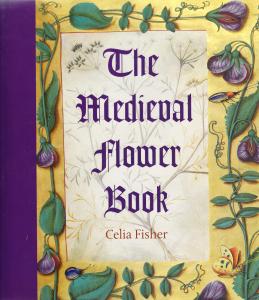The Medieval Flower Book
CODICE: ISBN 0712349456 EAN 9780712349451
AUTORE/CURATORE/ARTISTA :
Author: Celia Fisher
EDITORE/PRODUTTORE : British Library
COLLANA/SERIE : -
DISPONIBILITA': In esaurimento
TITOLO/DENOMINAZIONE:
The Medieval Flower Book
PREZZO : EUR 32,50€
CODICE :
ISBN 0712349456
EAN 9780712349451
AUTORE/CURATORE/ARTISTA :
Author: Celia Fisher
EDITORE/PRODUTTORE:
British Library
COLLANA/SERIE:
ANNO:
2008
DISPONIBILITA':
In esaurimento
CARATTERISTICHE TECNICHE:
128 pages
171 colour illustrations
Hardback with jacket
cm 22,5 x 24,5 x 1,4
gr 800
DESCRIZIONE:
From the front flap:
Since the earliest times flowers have been appreciated for their beauty and variety, as well as their usefulness. They were, and remain, important ingredients in medicines, foodstuffs and perfumes, but they have also acquired a symbolism exploited in art and literature.
In this delightful book Celia Fisher explores the 'floral outburst' that occurred in medieval manuscripts of the 14th and 15th centuries. Drawing on the British Library's superb collection, she selects over 170 beautiful depictions from a wide range of herbals and Books of Hours, including the finely detailed Belluno Herbal and the exquisitely painted Bourdichon Hours. Looking closely at each vibrant flower illustration, she reveals the skill and artistry of its medieval creator.
For ease of reference the plants have been arranged in alphabetical order, and the text that accompanies them outlines their origin, the derivation of their name, the properties for which they were most valued, and the symbolism with which they were imbued. Thus we learn that rose campions were introduced from the Holy Land, were used for candle wicks (which gave rise to their Latin name, Lychnis, meaning 'light'), and were also part of flirting games in which girls hid the flowers in their clothes and invited the young man of their choice to find them.
The Medieval Flower Book takes us on a journey around the world and through time, exploring the ways in which practical horticulture and ancient herbal traditions influenced social, cultural and spiritual life. Flower lovers and those interested in medieval art and history will find this richly illustrated volume informative, entertaining, and, above all, a joy to behold.
Contents:
page 8 Introduction. Plants in Context
Descriptions of Plants
18 Acanthus
19 Anemone and Adonis
20 Apples
21 Artemisia
22 Arum
23 Balm and Melissa
24 Beans and Broadbeans
25 Betony
26 Blackberries and Raspberries
27 Bluebells
28 Borage and Comfrey
30 Broom
31 Bryony
32 Campanula
33 Campion
34 Carline thistle
35 Centaury and Cornflower
36 Cherries and Plums
38 Cinquefoil and Lady's mantle
39 Clover and Vetch
40 Columbine
41 Convolvulus
42 Corncockle and Soapwort
44 Cranesbill
45 Cyclamen
46 Daffodils
47 Daisies
48 Dill and Coriander
49 Elecampane
50 Euphorbia
51 Figs
52 Forget-me-nots and Speedwells
53 Foxgloves
54 Garlic
55 Gourds, Cucumbers and Melons
56 Hawthorn
58 Hellebores
60 Hollyhocks and Mallows
61 Honeysuckle
62 Hops
63 Houseleeks
64 Hyssop and Marjoram
66 Irises
68 Ivy and Bay
70 Jasmine
71 Larkspur and Monkshood
72 Lavender
73 Lettuce and Dandelion
74 Lilies
76 Lily of the valley and Solomon's seal
77 Lupins
78 Mandrake
79 Marigolds
80 Medlars and Pears
82 Mulberries
83 Mullein
84 Nettles and Hemp
85 Nigella
86 Nightshade
87 Oranges
88 Orchids
90 Peas
92 Peonies
93 Pepper
94 Periwinkles
95 Physalis
96 Pinks
98 Plantain
99 Pomegranates
100 Poppies
102 Primroses and Cowslips
103 Quinces and Peaches
104 Redcurrants, Blackcurrants and Gooseberries
105 Rosemary
106 Roses
108 Saffron crocuses and Safflowers
110 Sage
111 Snowdrops and Snowflakes
112 Sorrels and Woodsorrels
113 Stocks and Sweet rockets
114 Strawberries
115 Tansy and Feverfew
116 Thistles
117 Vervain and St John's wort
118 Vines
120 Violets and Violas
122 Wallflowers
123 Waterlilies
124 Further Reading
125 Index of Manuscripts
125 General Index.
GENERE: Libri ,Monografie ,



